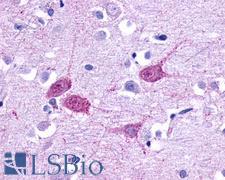Login
Registration enables users to use special features of this website, such as past
order histories, retained contact details for faster checkout, review submissions, and special promotions.
order histories, retained contact details for faster checkout, review submissions, and special promotions.
Forgot password?
Registration enables users to use special features of this website, such as past
order histories, retained contact details for faster checkout, review submissions, and special promotions.
order histories, retained contact details for faster checkout, review submissions, and special promotions.
Quick Order
Products
Antibodies
ELISA and Assay Kits
Research Areas
Infectious Disease
Resources
Purchasing
Reference Material
Contact Us
Location
Corporate Headquarters
Vector Laboratories, Inc.
6737 Mowry Ave
Newark, CA 94560
United States
Telephone Numbers
Customer Service: (800) 227-6666 / (650) 697-3600
Contact Us
Additional Contact Details
Login
Registration enables users to use special features of this website, such as past
order histories, retained contact details for faster checkout, review submissions, and special promotions.
order histories, retained contact details for faster checkout, review submissions, and special promotions.
Forgot password?
Registration enables users to use special features of this website, such as past
order histories, retained contact details for faster checkout, review submissions, and special promotions.
order histories, retained contact details for faster checkout, review submissions, and special promotions.
Quick Order
PathPlusTM HTR1F / 5-HT1F Receptor Antibodies
HTR1F is a G-protein coupled receptor for 5-hydroxytryptamine (serotonin) that also functions as a receptor for various alkaloids and psychoactive substances. Ligand binding causes a conformation change that triggers signaling via guanine nucleotide-binding proteins (G proteins) and modulates the activity of down-stream effectors such as adenylate cyclase. Signaling inhibits adenylate cyclase activity. HTR1F has high expression in the isocortex and some expression in the olfactory bulb, hippocampus, trigeminal ganglia, and cerebral blood vessels in the brain. In peripheral tissues, it is found in the uterus, mesentery, and arteries. In immunohistochemistry of cancer, HTR1F may show faint positivity in breast cancer, non-small cell lung cancer, ovarian carcinomas, pancreatic carcinomas and glioblastomas.
References: The Biochemical Basis of Neuropharmacology. 8th. Oxford, UK: Oxford University Press; 2003. pp. 271–320; Neurobiol Dis. 2005 Aug; 19(3):378-85, PMID: 16023580; Neuroscience. 2010 Aug 11; 169(1):229-35, PMID: 20423722; Neurol Res Int. 2017; 2017: 7138926, PMID: 28630769;
1 PathPlusTM Antibody

☰ Filters
Products
Antibodies
(1)
Type
Primary
(1)
Target
HTR1F / 5-HT1F Receptor
(1)
Reactivity
Human
(1)
Application
IHC
(1)
IHC-P
(1)
Host
rabbit
(1)
Product Group
GPCR Database Antibodies
(1)
PathPlus Neuro
(1)
Clonality
polyclonal pc
(1)
Format
Unconjugated
(1)
Epitope
Cytoplasmic Domain
(1)
Publications
No
(1)

Neuroscience
Fast Shipping
HTR1F / 5-HT1F Receptor Rabbit anti-Human Polyclonal (Cytoplasmic Domain) Antibody
Human
IHC, IHC-P
Unconjugated
50 µg/$440
Viewing 1-1
of 1
product results










